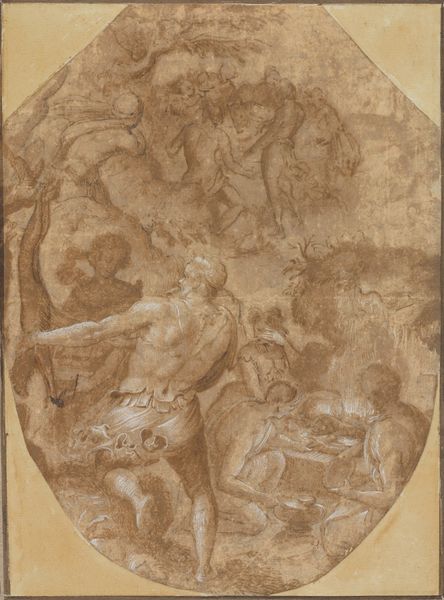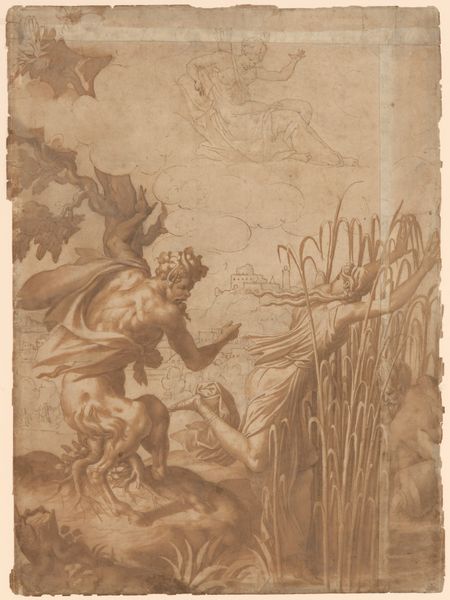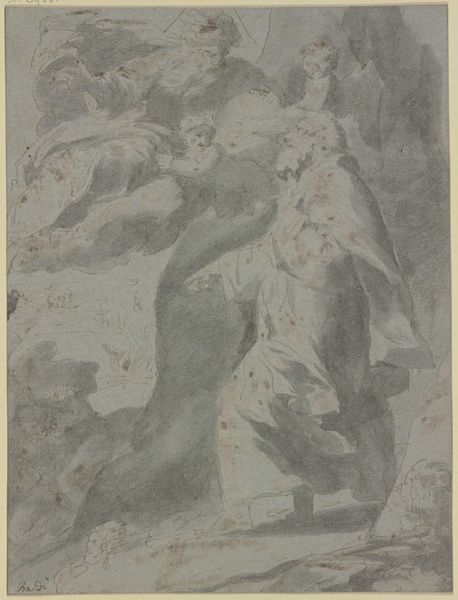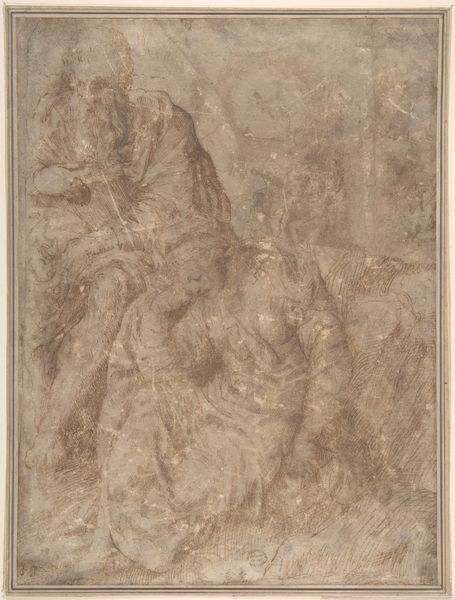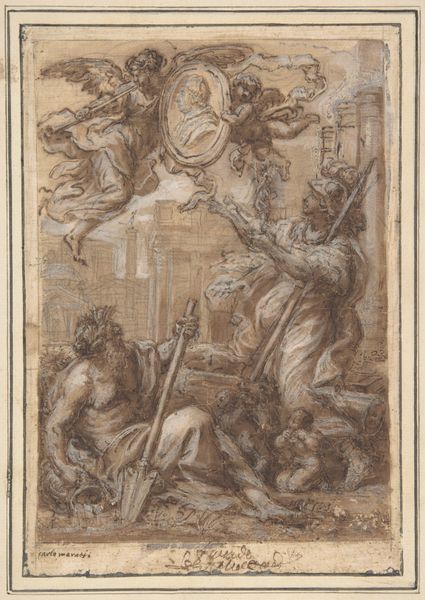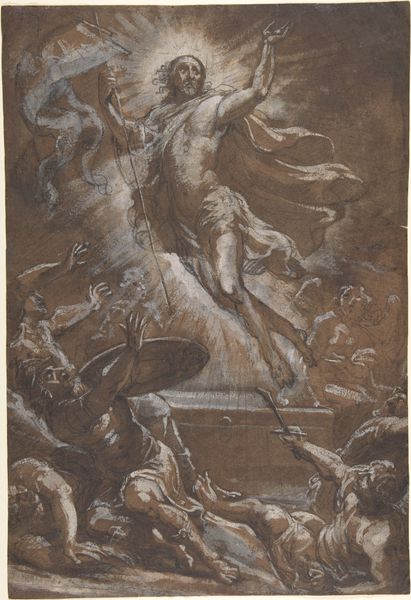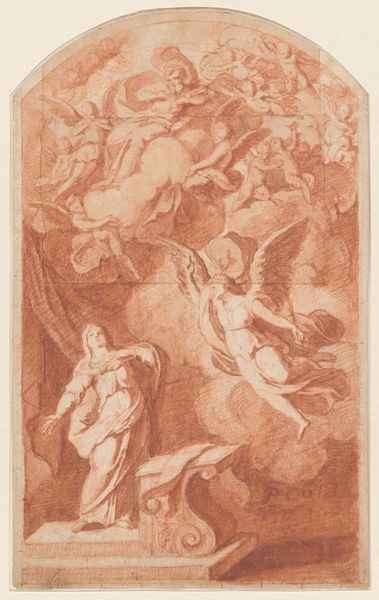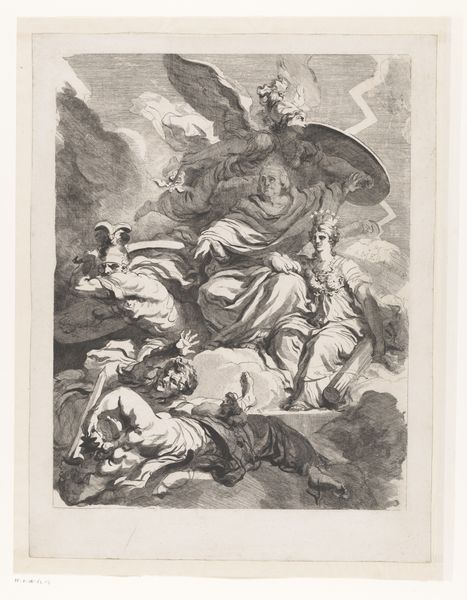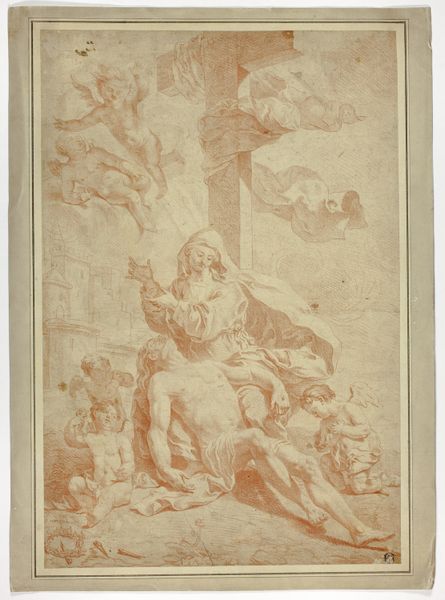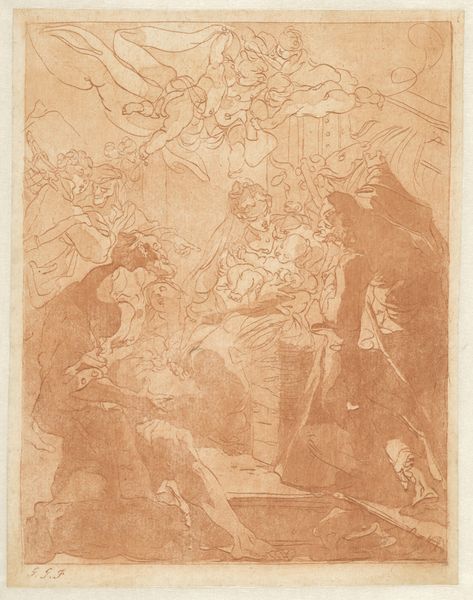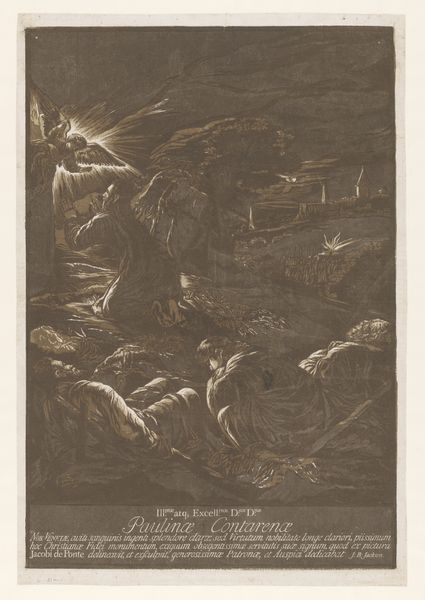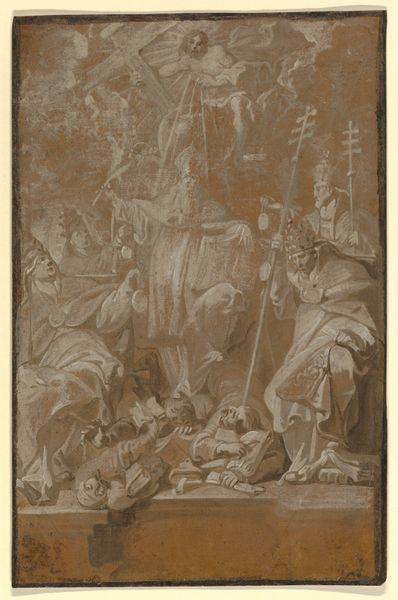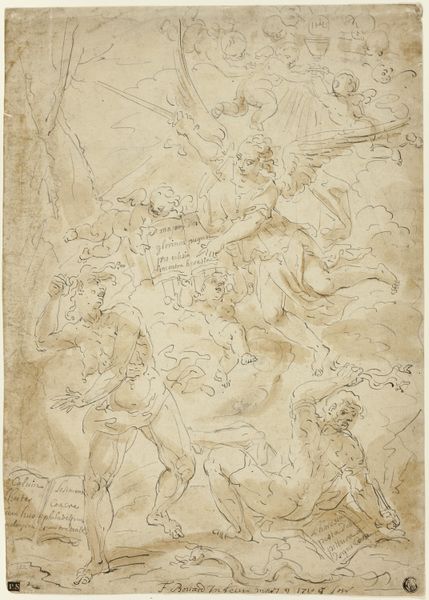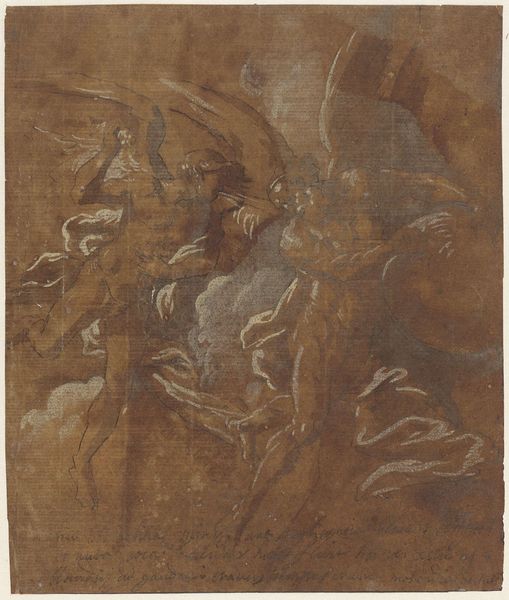
Dimensions: 10 1/4 x 9 3/16 in. (26.1 x 23.4 cm) (sheet)13 1/16 x 11 15/16 in. (33.18 x 30.32 cm) (mount)23 3/4 × 19 3/4 in. (60.33 × 50.17 cm) (outer frame)
Copyright: Public Domain
Editor: This drawing, "Pan and Syrinx," believed to be from around 1760 and attributed to Giuseppe Bazzani, is really striking! I’m immediately drawn to the drama and movement captured with just ink on toned paper. The color palette gives it an aged, almost sepia-toned feel. What do you see in this piece that I might be missing? Curator: Ah, yes! What a fantastic frenzy Bazzani gives us! Do you sense the raw emotion humming beneath the surface? This isn't just figures on paper, but a story unfolding before our eyes, capturing a crucial moment of Ovid's Metamorphoses. Think about the Baroque era’s love of heightened emotion and dynamic compositions. Now, notice how the light catches the fleeing nymph... where do your eyes go first, and why do you think that is? Editor: I think my eye goes straight to Pan, arms raised. His form is much lighter and stands out against the darker background. It's like a spotlight's on him in the midst of the chaos. Curator: Exactly! Bazzani’s skill with light and shadow crafts this very effect. This is where our romantic sensibility intertwines with Baroque technique: imagine the narrative of the myth, the sheer terror and desperation in Syrinx’s flight, Pan's frantic pursuit. How do you interpret the ending: loss and transformation. Bazzani seems so fond of his subject matter. Editor: I guess I didn’t really focus on the narrative before, but now I see how it impacts the feel of the piece. The Baroque drama combined with Romantic-era emotion really gives the drawing a palpable sense of urgency. Thanks, I hadn’t thought of it like that! Curator: The artist shows his love in these tiny details. This one, in particular, stays with you long after you leave it.
Comments
minneapolisinstituteofart almost 2 years ago
⋮
This commotion of dark splotches of wash and scribbled lines is an exquisite study of light and shadow. Fleeing the lusty satyr Pan, the nymph Syrinx was trapped at a river’s edge and begged her father, the river-god Ladon, and her two sisters (shown in the foreground) to rescue her. Just as Pan grasped her, she was transformed into reeds, leaving him with only the sound of the wind blowing through the reeds, which inspired him to make his pipes. Here, Syrinx’s transformation has begun, described in fluid pen strokes that elongate her hands and rise around her head. The fiery, rapid handling and uninhibited messiness suggest this drawing was a personal exercise in creative exploration. Although the name Trevisani is inscribed on the sheet by a later hand, the work is more likely by the 18th-century Mantuan artist Giuseppe Bazzani. An idiosyncratic designer, Bazzani favored dreamlike settings with gracefully posed figures arranged bizarrely in the composition and often partially obscured by mounds of earth or a vaporous atmosphere.
Join the conversation
Join millions of artists and users on Artera today and experience the ultimate creative platform.
